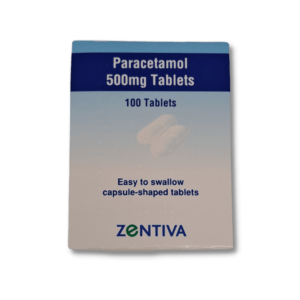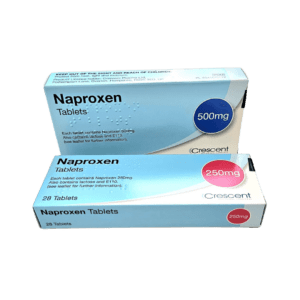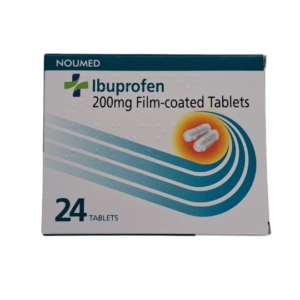You can buy non-steroidal anti-inflammatory drugs (NSAIDS) such as naproxen 250mg tablets, and paracetamol 100 pack online from our OnlineChemist private doctor. Simply complete the online consultation below and order, our clinician will privately prescribe the medication if suitable and OnlineChemist will dispense and dispatch that for you.




Pain relief medications, also known as analgesics, are drugs used to relieve pain. They work by blocking pain signals from reaching the brain or by reducing inflammation. Here are some of the most common types of pain relief medications:
Don’t let pain control your life. Take control with our pain management service
if you are pregnant or breastfeeding, there are some things to keep in mind when taking pain relief medications. Here are some general guidelines:
There are some contraindications for pain relief medications. Contraindications are medical reasons why a person should not take a particular medication. Here are some examples:
As always, it’s important to talk to your GP or pharmacist before taking any medications to ensure that they are safe and appropriate for your individual needs. They can help you weigh the potential risks and benefits of pain relief medications and other interventions.
Start a free consultation now!
There are several types of pain relief medications available in the UK, including paracetamol, non-steroidal anti-inflammatory drugs (NSAIDs), opioids, and other prescription painkillers. Some medications, such as paracetamol and ibuprofen, are available over-the-counter, while others require a prescription from a healthcare provider.
There are several non-pharmacological approaches to pain management that can be effective, including physical therapy, exercise, relaxation techniques, massage, acupuncture, and cognitive behavioural therapy. Talk to your healthcare provider about incorporating these approaches into your pain management plan.
Some natural remedies, such as herbal supplements, heat therapy, and meditation, may provide relief for some types of pain. However, it’s important to talk to your healthcare provider before trying any new natural remedies, as they may interact with other medications or health conditions.
The duration of pain relief medication use depends on the type of medication and the underlying cause of the pain. For acute pain, such as pain following surgery or injury, pain relief medication is typically used for a short period of time. For chronic pain, ongoing pain relief medication may be necessary. Talk to your pharmacist about the appropriate duration of pain relief medication use for your individual needs.
The NHS offers a range of pain management programs and services, including physical therapy, cognitive behavioural therapy, and medication management. These programs are typically provided through pain clinics and multidisciplinary teams. For more information – NHS pain management.
The side effects of pain relief medications can vary depending on the type of medication and individual factors such as age, health status, and dosage.
Common side effects of opioids and other prescription painkillers can include drowsiness, nausea, constipation, and confusion.
NSAIDs and other non-prescription pain relievers can cause stomach ulcers, kidney damage, and other side effects with long-term use.
For more information, see the NHS page on painkillers: https://www.nhs.uk/conditions/painkillers/
Your local pharmacist can provide advice and guidance on pain management, including over-the-counter pain relief medications and non-pharmacological approaches such as heat therapy and exercise.
For more information, see the NHS page on managing pain: https://www.nhs.uk/live-well/healthy-body/ways-to-manage-chronic-pain/
Pain management services are typically provided through pain clinics and multidisciplinary teams. To access these services, you may need a referral from your GP or other healthcare provider.
For more information, see the NHS page on pain clinics: https://www.nhs.uk/service-search/other-services/Pain-clinics/LocationSearch/1838
Here are some references that provide you more information about pain relief medications:
NHS Choices: Painkillers – https://www.nhs.uk/medicines/painkillers/
NHS Inform: Painkillers – https://www.nhsinform.scot/illnesses-and-conditions/injuries/painkillers
Medicines and Healthcare products Regulatory Agency (MHRA) – https://www.gov.uk/government/organisations/medicines-and-healthcare-products-regulatory-agency
Royal College of Obstetricians and Gynaecologists (RCOG): Pain relief in labour – https://www.rcog.org.uk/en/patients/patient-leaflets/pain-relief-in-labour/
Patient.info: Painkillers – https://patient.info/medicines/painkillers-leaflet
It’s important to note that these websites provide general information and are not a substitute for professional medical advice. Always consult with your GP or pharmacist before taking any medications or starting a new treatment regimen.
Complete consultation for your selected condition and order your medication.
Please answer the health questionnaire honestly, this will ensure that the medication you are requesting is right for you.
The UK registered prescriber will review your questionnaire and approve your order. In some cases, the prescriber may specify a preferred treatment.
Your treatment will be sent directly from our NHS online pharmacy, Online Chemist based in Norfolk.
The General Pharmaceutical Council (GPhC) and other UK health organisations have produced a handy guide to help people going online for medicines or treatment.
Read the guideline here
If you have a medical emergency do not use this service.
Please contact your own GP, visit Accident and Emergency or call 999 or 111 immediately.

Online Chemist
82 Middleton Road
Gorleston
Great Yarmouth
Norfolk, NR31 7AH
Phone: 01493 600610
Email: info@onlinechemistuk.net
Superintendent Pharmacist:
Obaidullah Zaman
BPharm, MPharm, PGDip (Pharmacy), MRPharmS, IP
GPhC Reg. Number: 2083409
Pharmacy Premises GPhC Reg. Number: 9011159
Monday 09:00 – 17:00
Tuesday 09:00 – 17:00
Wednesday 09:00 – 17:00
Thursday 09:00 – 17:00
Friday 09:00 – 17:00
Saturday Closed
Sunday Closed
Click here for driving directions
OnlineChemist is a trading name of Nomaz Limited.
Registered in England – 11349276.
© 2025 All rights reserved.